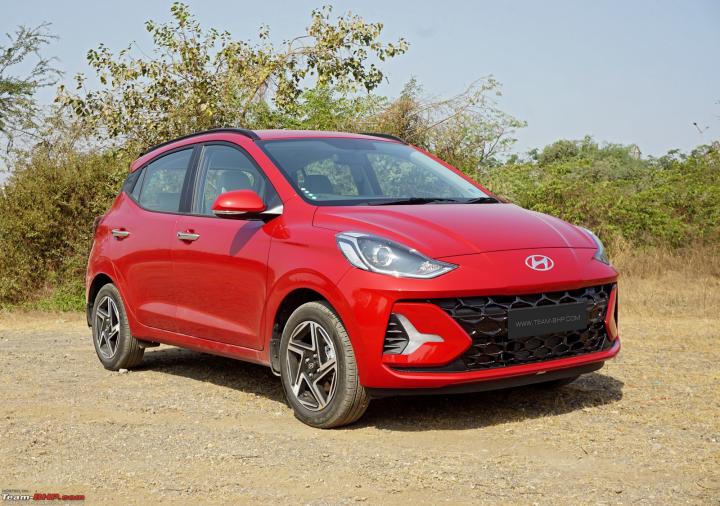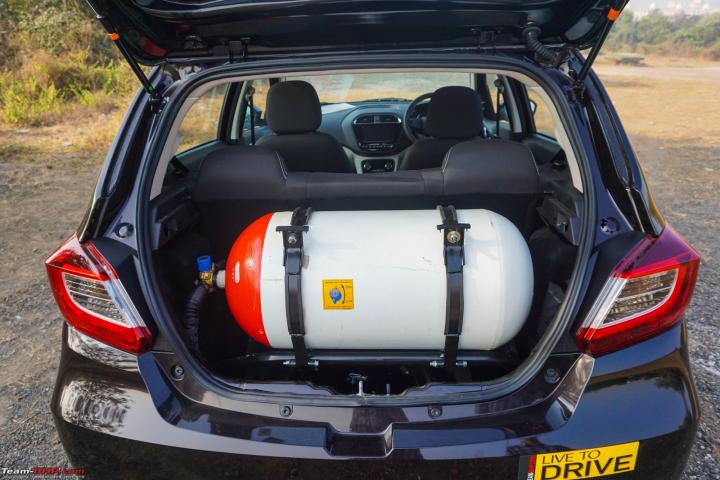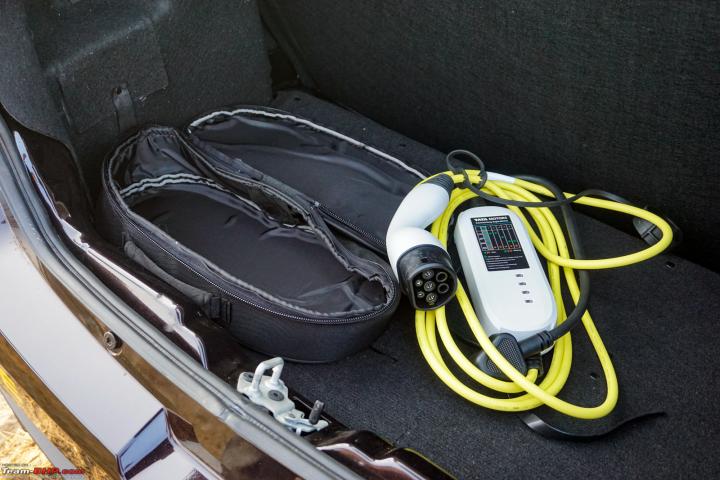News
Two months with a Tata Tiago petrol manual
Over the last two months, I have been using my sisters’ Tata Tiago since she moved on to a Kia Sonet Petrol DCT. The Tiago is a 2016 petrol XZ (manual) model.
BHPian aayusht recently shared this with other enthusiasts.
Sharing a brief review of the Tata Tiago petrol manual version.
I have passively been on the lookout for a second car for over a year. The need was not severe or urgent and I have been able to manage without a second car. A query was also raised and discussed on this very forum Link (Pre-worshipped car of the week : The cheap beater car)
Background of how I got hold of the Tiago:
Over the last two months, I have been using my sisters’ Tata Tiago since she moved on to a Kia Sonet Petrol DCT. The Tiago is a 2016 petrol XZ (manual) model.

Pros:
1. Unlike what the Team-bhp review says, the Tiago engine is not mediocre, rather it's fairly decent. Not racing material, but decent. I enjoy the mid range. In the second and third gear, it pulls and pulls. Most days, I am able to over-take traffic without breaking a sweat. The low range is not its strongest point. Sometimes when starting from a complete stop, the Tiago is not quick on its feet for a few seconds, maybe even in the low revs in second gear, but after that its pretty quick
2. The solid build is comparable to my Jeep
3. The suspension is comparable to my Jeep (ok, maybe not comparable, but much better than the Sonet that my sister got or the second gen Creta my dad has)
4. Really good Harman Kardon music system (but sometimes the Bluetooth connectivity is not great)
5. The small size lets me take the car anywhere in the city (have found parking spots in the narrowest of the places)
Cons:
1. NVH is not great
2. Driver seat does not go far enough back for my perfect driving position. Just a little bit more would have been great. For reference, I am 5'8
3. Headlights are not powerful (fortunately I need to drive the car within city limits and generally the roads are well lit)
4. When starting the car during winters, the car needs a little time to warm up before I can drive it smoothly. If I don’t give it time to warm up, it jerks a lot making it an unpleasant experience in the first few minutes of the drive
5. While I have personally not experienced it, my sister & dad who had been using the car over the past 7-8 years suggest that servicing will not be painless (but lets see) & it will only get worse as the car ages. So far I have not faced any issues.
Overall I am pretty happy with the car.
Plan going forward:
Lately my wife and I have gotten too used to driving an automatic, however after a few minutes of driving the Tiago when I first took the car, I was comfortable with the manual again.
My wife is not keen to resume driving a manual & not too excited about the Tiago. Besides, I like driving a car with a higher seating as well (spoilt after the Compass). We are still passively on the lookout of alternatives and have driven petrol automatic version of cars such as Kiger, Jimny, XUV400 (in absence of the XUV300). Preference is for automatic petrol cars with good suspension (maybe SUVish car), but until we decide on which new car (beater car), I will hang on to the Tiago.
Since I have borrowed the car from my sister and not bought it, I need to figure out next steps in a few months at least, but until then, I'll enjoy driving this peppy car.
Click here to read more BHPian comments & insights.
News
Tata aims for a 5-star Bharat NCAP rating across its range
BNCAP requires cars to be equipped with 6 airbags to be eligible for a 5-star rating.
Tata Motors is aiming for a 5-star Bharat NCAP rating for all its future products. That includes the next-gen Tiago and Tigor.
BNCAP requires cars to be equipped with 6 airbags to be eligible for a 5-star rating. While the latest iterations of the Nexon, Harrier and Safari are available with 6 airbags, entry-level models like the Tiago and Tigor only get 2 airbags. However, this will change when the next-generation models arrive.
Speaking on the sidelines of the Bharat Mobility Global Expo, Mohan Savarkar, Chief Product Officer at Tata Motors, stated that Tata cars are already built with higher-than-regulation structural safety, but the carmaker is looking to further augment its safety features by offering 6 airbags as standard across its range.
“BNCAP is an aspirational safety yardstick for automakers to choose to apply to. We are watching this space very closely. As there is demand for such levels of safety from customers in this segment, we will be going for that,” he added.
Savarkar further stated that the company is now focusing on ensuring that a vehicle does not get into an accident in the first place. “That is where active safety and ADAS come in,” he added.
Source: Autocar India
- Tags:
- Indian
- Tiago
- Tigor
- Bharat NCAP
News
Tata Tiago CNG AMT spotted at dealer yard ahead of launch
The Tiago iCNG AMT will be available in three variants – XTA, XZA+ and XZA NRG.
Tata Motors is gearing up to launch the Tiago iCNG AMT and Tigor iCNG AMT in the Indian market. While bookings are already open, the carmaker is yet to announce the pricing.
The first cars have started arriving at dealerships ahead of the launch. This walkaround video of a Tiago iCNG AMT provides a detailed look, with all its features.
The Tiago iCNG AMT will be available in three variants – XTA, XZA+ and XZA NRG. The CNG variants will get features like projector headlamps, auto-folding ORVMs, a 7-inch touchscreen infotainment system and a semi-digital instrument cluster.
The Tiago iCNG is powered by a 1.2-litre, 3-cylinder petrol engine that produces 72 BHP @ 6,000 rpm and 95 Nm @ 3,500 rpm in CNG mode. The engine is now available with a 5-speed AMT in addition to the standard 5-speed manual gearbox.
The Tigor iCNG will also be available with the same powertrain. It will come in two variants – XZA and XZA+.
Source: Kataria Garage
News
Troubled by the front row vibration in my Tiago: Tata says it's normal
Strangely, this does not happen right after a cold start or until the engine heats up.
BHPian twominds recently shared this with other enthusiasts.
Hello BHPians,
I own a 2021 Tata Tiago XZ+ Petrol, manual with 15k+ KM on ODO. I have been experiencing vibrations during idling mostly concentrated in the front row since last month which were not so noticeable in the last (almost) three years. Though it is a known fact that vibrations and Tata cars are inseparable, it was not so bad but I find it unbearable now.
Front passenger seat is the worst affected and the steering wheel vibrates too. Strangely, this does not happen right after a cold start or until the engine heats up (i.e, at least two or three bars on the temperature gauge). It's understood that the engine revs at a slightly higher RPM on a cold start, but why after the engine reaches its normal operating temperature just beats me!
I decided to bring it up during the next periodic service which was just around the corner. The service advisor suspected spark plugs, but they had to be replaced anyway per TATA's schedule. I knew this and insisted on using NGK Iridium Spark plugs since I have been hearing good feedback from my fellow Tata car owners. He flatly refused saying they are not allowed to use anything other than what TATA supplied ones - BOSCH spark plugs. BTW, I have bought an extended warranty (valid until 2026). So I convinced myself that I will have to live with BOSCH spark plugs and returned.
As expected the TASC did not find any problems and asked me to get it back if I find any problems. I immediately took it for a test drive (though it was dark) and after driving for 10-15 mins it was clear that the problem was not resolved.
Not satisfied with the explanation, I reached out to TATA Customer Care. Next day I received an email and also a call from TATA Motors, they put me through to various people and I clearly expressed that I was not happy. Finally, they put me through to the same service centre and asked me to get my car the next day for a re-check. I clearly told them the Service advisor is not at fault here and I do not wish to blame him. I know him and and have had some good experiences with other problems with my car.
Next day I dropped my car and the regional CRM from TATA dropped in to take a look. Later they called me up and said there was nothing wrong. Meanwhile, when I was in the service centre I just requested the technician attending to another Tiago to let me check it - just start and idle for a few mins. It seemed way better than mine!
I just returned feeling hopeless.
Summary of what has been done so far by the TASC:
- Spark plugs replaced (as per schedule)
- MAP, MAF, Lambda (oxygen) sensors checked, cleaned - no issues found
- No DTCs reported (no value addition)
- Air filter replaced
- Timing belt checked
Importantly almost everyone, TATA motors, TASC seem to be parroting one line: "This is how a three-cylinder engine behaves". I personally am not satisfied because I know my car, I love it - it was definitely not this bad. In the last three years, I have had some really wonderful road trips and now I just feel sad even looking at the car and really want to resolve this!
What else can I do now, help me out!
Here's what BHPian Lemonysnicketz had to say about the matter:
Hey,
I own a Tiago JTP. From my experience it could be one of two things:
- A and C engine mounts. They are most prone to failure especially the C mount which is under the engine and right below the front row. Look for cracks in the rubber of the mount.
- Clutch release bearing. Tata TA65 gearboxes are notorious for cheating through release bearings. Easy way to check is if there is a difference in vibrations when you engage and disengage the clutch in neutral.
Hoping this helps.
- your neighborhood Tata vibration enthusiast
Here's what BHPian vattyboy had to say about the matter:
I experienced something similar in my Jeep Compass. In my case the culprits were-
- Bad Engine C mount.
- Bad Alternator.
Replaced both of them for 1.10 lacs. Jeep parts are Merc, BMW, and Audi like expensive.
Here's what BHPian Shreyans_Jain had to say about the matter:
Most likely culprit is bad engine mounts. One or more may need replacement, you need to have the car inspected at any other dealership or any competent garage.
Here's what BHPian SS-Traveller had to say about the matter:
Suspicion is, one of the ignition coils is failing when hot. Swap out all the ignition coils with new ones (or from another car which has no vibrations), and check again.
Here's what BHPian Jeroen had to say about the matter:
Although a bad coil tends to throw various error codes, I have seen a few cases where it did not.
I don’t know if your engine has a dual flywheel or some harmonic damper. Both can cause these sorts of symptoms when beginning to fail. And it usually shows up when everything warms up, rather than cold.
I would also check very carefully the proper alignment of the exhaust and the exhaust rubbers. As the exhaust warms up it expands and perhaps it just starts touching something.
There could be other possible causes as well. Notably the ignition (pre) timing and or advance.
Is the idle RPM set correctly? Don't go by the rev counter, but check with an external device.
Good luck, let us know what happens.
Check out BHPian comments for more insights and information.
News
Tata Tiago & Tigor CNG to get AMT option; bookings open
Dealerships have started accepting pre-bookings for a token amount of Rs 21,000.
Tata Motors is gearing up to launch India’s first CNG-powered cars with an automatic gearbox. The Tiago and Tigor CNG will soon be offered with an AMT option and dealerships have already started accepting pre-bookings for a token amount of Rs 21,000.
The Tiago iCNG AMT will be available in XTA, XZA+ and XZA NRG trims, while the Tigor iCNG AMT will come in XZA and XZA+ variants.
The Tiago and Tigor iCNG models are powered by a 1.2-litre 3-cylinder engine that produces 72 BHP @ 6,000 rpm and 95 Nm @ 3,500 rpm in CNG mode. Currently, both models are offered with a 5-speed manual gearbox. Customers will soon get the option of a 5-speed AMT as well.
The Tiago and Tigor iCNG feature Tata’s dual-cylinder CNG tank technology. Instead of a single large CNG cylinder that gobbles up boot space, the cars are equipped with two smaller cylinders that fit under the luggage area.
Source: Autocar India
- Tags:
- Indian
- Tata Tigor
- Tata Tiago
- Tiago
- Tigor
- CNG
News
Why I chose the Grand i10 NIOS AMT over Celerio, Tiago for my father
Finally, concluded that for an Automatic car for an elderly user / a novice driver (myself), a new car with is better than second-hand.
BHPian dashki recently shared this with other enthusiasts.
Hi,
I made my first purchase of Automatic Hatchback, thanks to the inputs I gathered on Team-BHP. So this post is to share my decision-making process, hoping it helps others.
Background / User:
My father, who is 80+ years old, has been using a 2011 model of Hyundai i10. It was a second-hand purchase. I was looking to get him an automatic instead. Since it is only for local city drives in Chennai/Blore, we were initially considering a secondhand. The idea was that he would use the automatic and I would take his manual i10 for my use. Once he stops driving, I would sell the manual and take over the automatic.
When I asked people for input, I understood that apart from the budget, another decision-making factor would be featured. When I applied those filters, I eventually realized a new car may make more sense.
Decision-making factors for second hand vs new car:
- Only Automatic Hatchbacks (we prefer small cars for city drive)
- Budget: started with ~ 5L for second hand, later increased to <10L for new car
- Non-negotiable features for my father's use and myself: Reverse camera with guidelines, hill hold assist
- Others: Automatic - driving experience, resale value, service centers, NCAP safety rating, etc
- I learned on Team-BHP that for an automatic car that is used for more than 20-30k KM, the clutch plate may need replacement / automatic driving experience may not be as good.
Finally, concluded that for an Automatic car for an elderly user / a novice driver (myself), a new car is better than a second-hand.
Which car?
- When I started looking around, I had the following under consideration:
- Renault Kwid
- Maruti Celerio
- Tata Tiago
- Hyundai Grand i10 Nios
Renault Kwid:
Pros -
1. Really liked the reverse camera with guidelines
2. Look & feel; more spacious for a small car
Cons -
1. My test-drive experience was not good, the brakes felt very jerky even though the car had clocked only 3000 KM
2. I learned on this forum (Should I avoid the Renault Kwid Climber AMT?)that Renault Kwid's AMT experience is not good either.
3. Not so good in terms of safety
Maruti Celerio:
Pros:
1. Value for money, uff! The top minus one variant, with some additions like a reverse camera, made it a great deal.
2. Sales experience: Maruti offered a great discount and I was tempted by it. Overall sales experience was really good and I actually booked the car by paying a token advance (later, got a refund).
3. Automatic driving experience: Since Maruti Celerio has AGS, rather than AMT, the drive was smooth
4. After-sales service & resale value
5. Subscription option available (I was considering this for short-term usage and later decided against it)
Cons:
1. Poor NCAP Safety Rating
2. Look & feel - quite basic
Tata Tiago:
Pros:
1. Best NCAP safety rating in this segment
Cons:
1. Service
2. Resale
3. Automatic driving experience not smooth (as per inputs from this thread (Tata Tiago Vs Maruti Ignis Vs Hyundai Grand i10 Nios | City car for my wife))
Hyundai Grand i10 Nios
Pros:
1. Premium look & feel
2. Service
3. Better NCAP safety rating than Maruti Celerio (my next best alternative in the consideration list)
4. Smooth Automatic driving experience (as good as / comparable with Maruti Celerio)
5. Cruise Control is available in the top minus one variant itself
Cons:
1. Significantly more expensive than Renault / Maruti
Verdict / Decision:
I got my Hyundai Grand i10 Nios Sportz automatic delivered 2 days back. It feels so easy, and casual to drive in this. I'm excited about this purchase and looking forward. I am grateful to this forum for having helped with all the information that influenced my purchase decision. Thank you.
Check out BHPian comments for more insights and information.
News
Rumour: Tata Tiago & Tigor could get twin-cylinder CNG tank tech
The ALFA-based Altroz and Punch are the first models to get Tata's twin-cylinder CNG tech.
Tata Motors recently launched the Altroz iCNG with its novel twin-cylinder technology. Now, according to a media report, the company is looking to introduce the same in the Tiago and Tigor.
Instead of using a single large cylinder that takes up space in the boot, Tata Motors has developed a system consisting of two smaller cylinders that fit under the boot floor, leaving usable luggage space in the boot.
The ALFA-based Altroz and Punch are the first models to use the twin-cylinder setup. If the latest reports are to be believed, the carmaker could introduce a similar setup on models based on the older X0 platform. Currently, the Tiago and Tigor have a conventional CNG setup with a single large tank mounted in the boot.
Both cars are powered by a 1.2-litre engine that produces 72 BHP @ 6,000 rpm and 95 Nm @ 3,500 rpm when running on CNG. The engine is paired with a 5-speed manual transmission.
Source: Autocar India
- Tags:
- Indian
- Tata Tigor
- Tigor
- Tata Tiago
- Tiago
- CNG
News
Tata launches E20-compliant Tiago, Punch, Altroz & Nexon
Tata Motors has increased its standard warranty from 2 years / 75,000 km to 3 years / 1 lakh km.
Tata Motors has launched its BS6 Phase II range of passenger vehicles, featuring RDE and E20-compliant petrol, diesel and CNG powertrains.
Tata Motors claims that the upgrades made to the engines have not only helped lower emissions but have also improved the low-end drivability of the Altroz and Punch. They also get Idle Stop Start as standard across all variants.
The Altroz and Nexon are available with upgraded Revotorq diesel engines that are said to be more responsive. Tata claims the Nexon’s 1.5-litre diesel has been retuned for better performance.
The carmaker has also been working on the Tiago and Tigor. Both cars are said to benefit from lower NVH and now come equipped with TPMS.
Furthermore, Tata Motors has increased its standard warranty from 2 years / 75,000 km to 3 years / 1 lakh km.
News
Tata Tiago Electric: Our observations after a day of driving
If you’re wondering, how it compares to the Tigor EV with the torque deficit, don’t worry. The Tiago EV feels very similar to drive due to the lower kerb weight (86 kg lighter) and the tuning of the motor.
Driving the Tata Tiago EV
The car that we got to drive was the long-range variant with the 24kWh battery pack. It has a Permanent Magnet Synchronous Motor that puts out 74 BHP & 114 Nm of torque:
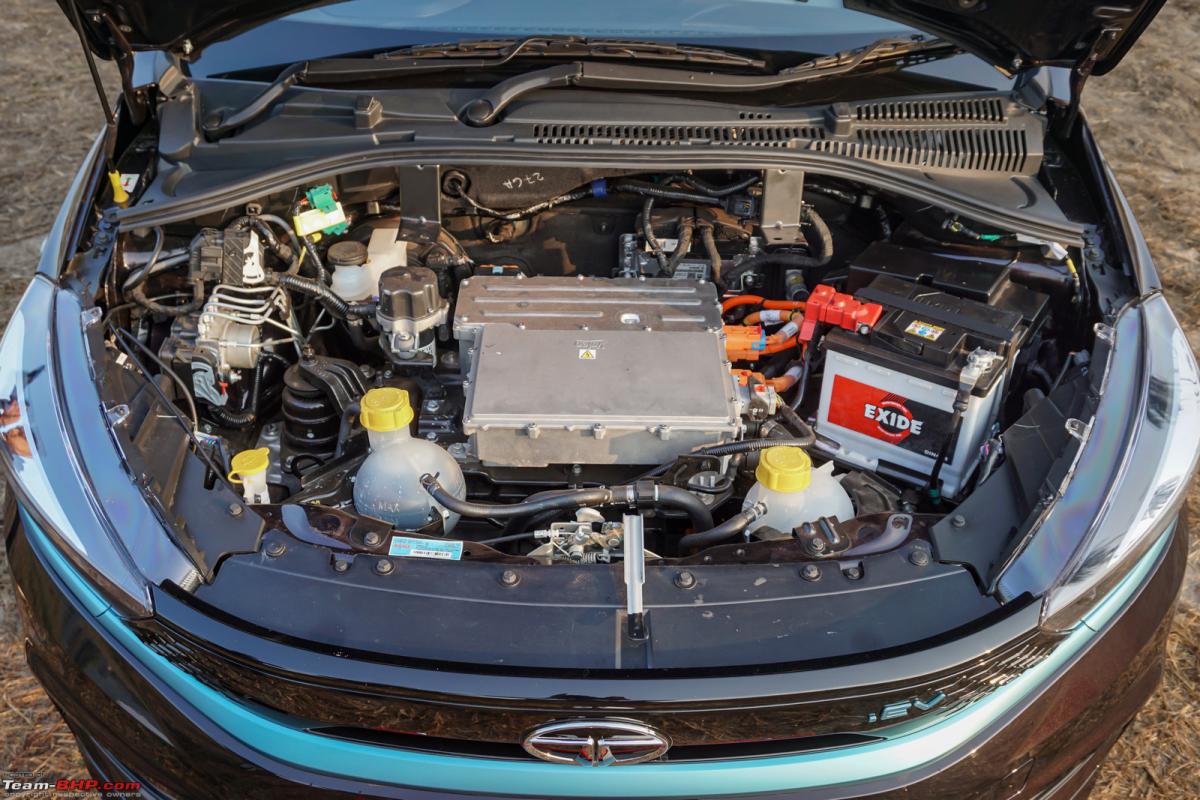
Before we get to the driving part, let’s get some basics right. There are 3 main components in an EV – the battery, the motor, and the controller/charger. The battery is what stores the energy and the motor is what uses that energy to move the car. The controller/charger converts the energy from the battery into a usable form to power the motor. In more technical terms, the power grid from your house or a charging station is usually an AC current. The lithium-ion battery can store electric energy in DC form. So while charging, there’s an AC/DC converter that will convert the power grid's AC into DC and store it in your car’s battery. The DC fast chargers that you see usually have the AC/DC converter inbuilt, which is how they can charge your car’s battery faster. The controller typically sits on top of the motor. In the case of the Tiago EV, the controller and motor are placed under the bonnet.
The Tiago EV shares its powertrain with the Tigor EV. However, there are a few differences. The torque rating is down by 56 Nm in the Tiago EV. Both have a claimed 0-60 km/h time of 5.7 seconds, despite the Tigor EV being heavier. The tuning is different on both cars and it’s worth noting that the maximum motor rpm of the Tiago EV is higher than that of the Tigor EV. Now, let’s get to the driving part. People driving an EV for the first time will need to get used to the eerie silence after pressing the start/stop button, but it takes just a couple of drives to feel comfortable with it. There are 4 transmission modes to choose from – D, R, N, and S. ‘D’ mode is more designed for city driving conditions, while ‘S’ mode is when you want that extra power (at the cost of FE, which in this case, is the battery charge level). The rotary dial for transmission modes is not very intuitive and a traditional AT gear lever with slots would’ve been preferred. Tata has integrated their recent electric cars with a useful feature to go with this rotary transmission dial. Say you’re at a traffic signal, you no longer have to switch to ‘N’ and pull the handbrake. You can just pull the handbrake in ‘D’ mode and the creep function is disengaged, so the car won’t move. Neat integration, but the customers will have to be educated about this.
As a safety feature, the car will always start in "N" mode. Engage D, take your foot off the brake pedal and the Tiago EV gets off the line in a perfectly smooth manner, crawling at 6 km/h. It’s very linear and without any jerks. Driving around in "D" mode within the city is a super convenient affair. No clutch, no gears, no turbo lag & no noise means even a newbie driver will seem like a smooth one. The motor has sufficient torque, but it is used conservatively in "D" mode for a smoother driving experience & to maximize driving range. Think of "D" being more like "ECO" mode. Performance in D mode is decent, but that's it. You won’t have any issues keeping up with city traffic & power is sufficient for day-to-day commuting. When you want to suddenly accelerate from say 40 - 50 km/h though, you will feel the power deficit & it feels like a 1.2L NA petrol! If you want quicker acceleration, simply switch to "S" mode and you’ll notice a BIG difference in the way the power is put down. The throttle response is much sharper and you get a stronger surge of power. Added bonus = in "S", you'll see the power gauge on the left showing a redline at the limit (via 3 red bars), just like a conventional rev counter.
Out on the open road, D mode is adequate for regular drivers. You can cruise comfortably on the expressway. However, if you need to execute an overtaking manoeuvre quickly, S mode comes in handy. You'll also find yourself engaging "S" mode whenever you are in the mood for some fun. The Tiago EV feels peppy in Sport mode, even on the open road. Power is delivered strongly till 100 km/h, after which it starts to taper off. The Tiago EV's top speed is limited to ~120 km/h and progress from 110 - 120 km/h is quite slow. Must add that electric cars aren't good at high-speed cruising, from the range point of view. Drive continuously at 110 - 120 km/h in "S" mode and you'll see the battery level drop alarmingly fast. That's one of the reasons you'll see most EVs driving at 80 - 90 km/h on the expressway in the middle lane. If you’re wondering, how it compares to the Tigor EV with the torque deficit, don’t worry. The Tiago EV feels very similar to drive due to the lower kerb weight (86 kg lighter) and the tuning of the motor. All in all, it is a smooth car to drive in the city and on the occasional inter-city highway trips at 80-100 km/h.
Regenerative Braking
Remember when we said Tata is updating its cars based on customer feedback? Here’s an example. The Tigor EV that we drove last year didn’t have adjustable regenerative braking. The Tiago EV gets this feature and the latest Tigor EV also has been updated with the addition of adjustable regenerative braking. Way to be proactive Tata Motors! There are 3 levels of regeneration that you can choose from. You can also turn it off completely and depend on the brakes for stopping the car. Driving with maximum level 3 regeneration, you can feel your head nod when you lift off the accelerator. It’s good for maximizing range, but not so good for smooth driving. You can switch to level 1 or 2 for smooth deceleration on lift-off. One-pedal driving is very much possible in the city with level 3 regen as the deceleration is quite strong. However, the car won't come to a complete halt. It will crawl forward and you have to apply the brakes to stop it. This is again an individual preference and we were told that depending on customer feedback, Tata will or will not make the change in the next update. This change will merely be a software update, so it can be incorporated easily.
A thoughtful integration is that in level 3 regeneration and sometimes in level 2 (if the deceleration is strong), the brake lamps light up to let the car behind know that the Tiago EV is slowing down. Another point to note is that the level 3 regeneration will not be as strong when the battery percentage is 85 and above. It’ll show that the car is on level 3, but it won’t decelerate as strongly.
Noise, Vibration & Harshness (NVH)
Well, there’s no engine noise for starters! The only sound coming is a faint whirring by the electric motor. No gearshifts & minimal mechanical parts mean no jerks or vibrations. On the highway, tyre noise starts creeping into the cabin early at 80 km/h. You'll hear it more because there is no engine sound to drown some of it out.
Range
Range anxiety is a big concern with EVs. However, it’s only when you are pushing the car hard that you'll notice the range and battery percentage falling at a rapid pace. Tata Motors claims that under standard test conditions the Tiago EV has a range of 315 km, but under normal driving conditions, you can expect a range of ~200 km. This is enough for those intending to drive primarily in the city.
The range displayed on the MID varies based on the driving style of the previous driver. So, we couldn’t depend on the range readout on our test drive. There’s another useful bit of information on the MID next to the speedometer marked as ‘AEC’ which stands for average energy consumption and has a Wh/km reading. We managed to get around 140 Wh/km with ~60% driving in S mode and 40% sedate driving with maximum regeneration. If you want to calculate what that translates to in range, just divide 24,000 (24 kWh battery capacity) by the AEC reading. In this case, we got ~171 km of range, which is not bad considering the amount of time we spent in S mode. Keep the AEC number close to 120 Wh/km and that should translate to ~200 km of range which seems doable.
Charging
Tata Motors has been working with its sister company, Tata Power, to improve the charging infrastructure levels. Also, there are multiple independent players popping up with charging stations everywhere. That said, we can tell you that the best place to charge your EV is at home. Cheapest + most convenient. At an average cost of Rs. 8 per unit, you’ll be paying Rs. 192 for a full tank at home. The estimated charging time (10% to 100%) from a 15A plug is around 8.7 hours. You can opt for the 7.2kW AC charger at your home or office for Rs 50,000 to bring down the charging time to 3.6 hours. A DC fast charger would top up the charge from 10% to 80% in just under an hour.
Suspension
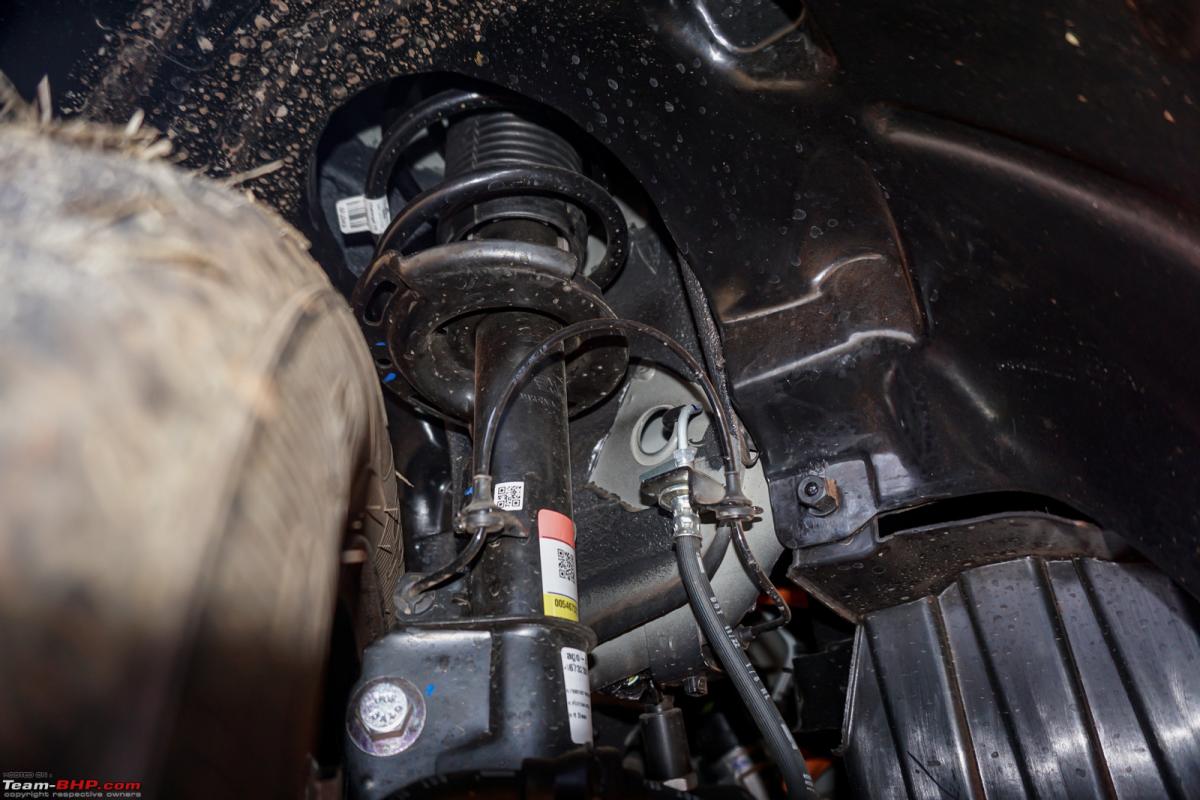
Ride Comfort
The Tiago EV gets a MacPherson strut suspension with dual-path struts at the front and a twist-beam suspension at the rear. It rides on 14-inch rims shod with 175/65 section tyres. The recommended tyre pressure rating is 33 PSI all around.
Like most fossil fuel cars converted to electric, the Tiago EV's suspension has been stiffened up due to the heavy battery pack it is carrying. You'll notice the firmer suspension as soon as you start driving the car. Over some mildly uneven roads in the city at slow speeds, there is a fair bit of movement in the cabin and it even feels jiggly at times. However, the suspension is quite absorbent at low speeds and you can carry some speed over rough roads. You feel more of the road in the Tiago EV, but still, the ride quality is liveable & compliant enough on most city roads. It's only the really big bumps that come in strong, as do the sharp road dips. On the other hand, the Tiago EV rides rather flat on the expressway. At high speeds, i.e. 100 km/h, you have to be careful of the road undulations and expansion joints.
Handling & Dynamics
There are a couple of things that aid the handling characteristics of the Tiago EV. Firstly, it’s the firmer suspension, and secondly, the heavy mechanicals (battery pack + motor) that lower the center of gravity. High-speed stability is very good and you’ll be doing 110 - 120 km/h on the expressway without feeling nervous at all.
Get on some twisty roads and you’ll appreciate the stiffer suspension. The car feels agile and you can carry good speed into corners. The suspension setup does complement the chassis well and the Tiago EV holds its line nicely. Changing direction on back-to-back corners is no problem either. You will like how the EV feels well-balanced in corners. In comparison to the Tigor EV, you don’t have the additional weight on the rear axle which is why it feels a tad bit more composed. Earlier, I had apprehensions that the heavy battery pack might cause some imbalance, but we didn't face any problem on our (admittedly) limited test drive. The only issue is the 175/65 section rubber, which is meant for maximizing range and not for pushing hard into corners. You will hear the tyres chirp when powering out of tight corners.
Steering
The electric power-assisted steering is a nice unit and is super light at parking speeds. The turning radius of 5.1 m is user-friendly and you can manoeuvre the car easily with gentle inputs on the steering. It weighs up adequately as you gain speed. It also has that typical trait in Tata’s steering where the weight is not added gradually. At ~50 km/h, you will notice that the steering wheel suddenly gets heavy. Very weird! The EPS is dead and there’s not much feel or feedback from it.
Braking
The Tiago EV gets disc brakes at the front and drum brakes at the rear. Their performance, in general, is satisfactory. However, we feel that wider tyres would definitely improve the braking performance of the car. Another sore point is that, like most EVs, the brake pedal has a spongy & rubbery feel. It feels weird at first, but you will get used to it.
Continue reading the discussion on the 2022 Tata Tiago Electric on our forum.
News
2022 Tata Tiago Electric Review : 11 Pros & 11 Cons
There are a couple of things that aid the handling characteristics of the Tiago EV. Firstly, it’s the firmer suspension, and secondly, the heavy mechanicals (battery pack + motor) that lower the center of gravity.
Tata Tiago EV Pros
- A well-rounded EV package at a sub-10 lakh rupee starting price. Total value-for-money
- Zero tailpipe emissions & green image will appeal to the environmentally-conscious
- Real-world range of ~200 km is adequate for city commutes & urban dwellers
- Stupendously cheap fuel cost of 1 rupee / km (if you charge at home)
- Peppy behaviour in "S" mode! "D" mode is rather tame though
- Selectable regenerative braking is a very welcome feature
- Sorted road manners due to the lower center of gravity & firmer suspension
- Smooth drive, no gears, light controls & compact size make it an ideal city car
- Well-designed interiors are likeable & user-friendly
- Features like the 8-speaker Harman audio system, cruise control, auto headlamps & wipers, connected car tech & more
- Solid build & construction. Tigor EV's 4-star GNCAP result is reassuring
Tata Tiago EV Cons
- A stiff 4-lakh rupees more expensive than the Tiago Petrol AMT. You're paying for the tech & being an early adopter
- Needs a charging point installed at your home parking. This is not doable for many people
- ~200 km range means this is strictly a city car. No long highway runs
- Stiffer suspension than the regular Tiago means you feel more of the road. Bad roads are felt
- Power tapers off after 100 km/h; top speed of just 120 km/h
- No spare tyre, you will have to make do with a puncture repair kit. We suggest buying a spare
- Long “full tank” charging times in comparison with an ICE car. Overnight charging is best
- Some misses such as "P" mode on the shifter, alloy wheels, adjustable rear headrests, etc.
- Rear headroom is tight. Also, a rare Tata car that cannot seat 5 (best for 4 adults)
- Tata's after-sales service quality is a hit or miss. Remains a gamble
- It's a brand-new technology, so there will be issues & niggles
Read Team-BHP's Detailed Tata Tiago Electric Review.
Pages



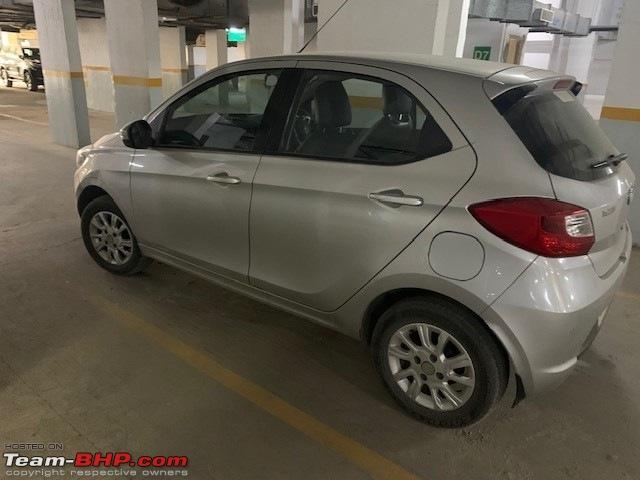
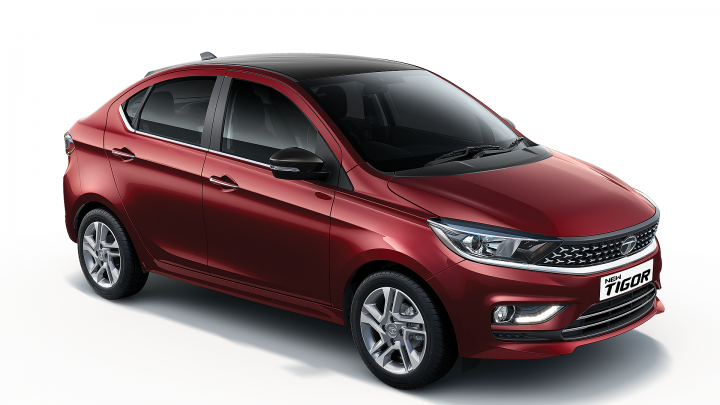
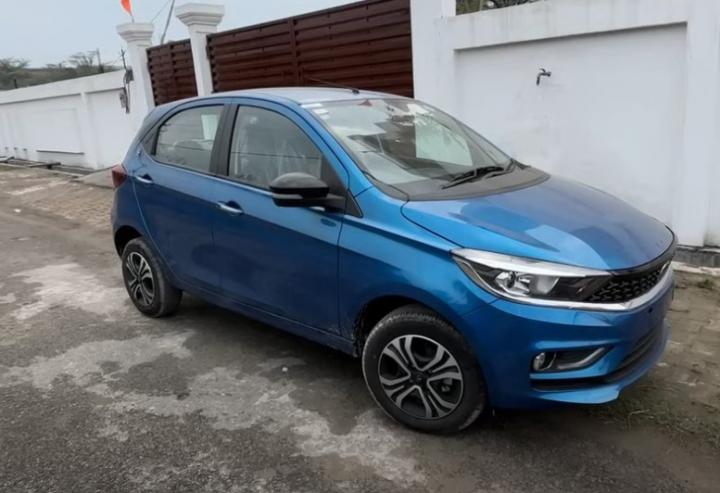
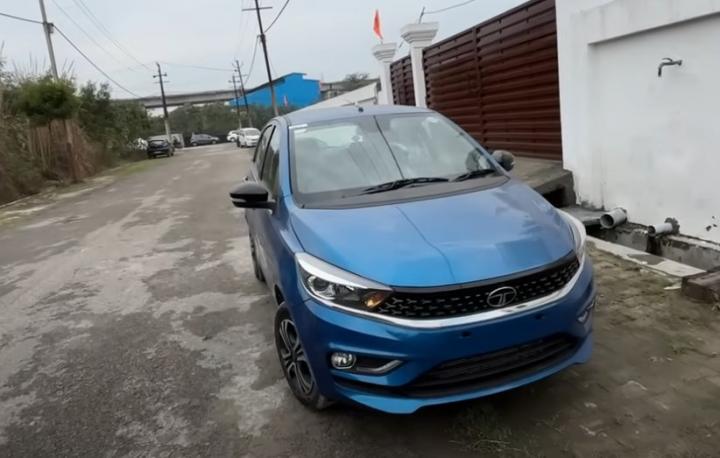
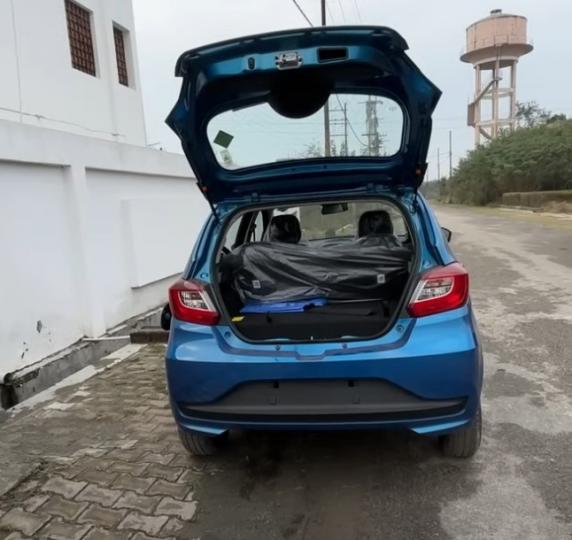
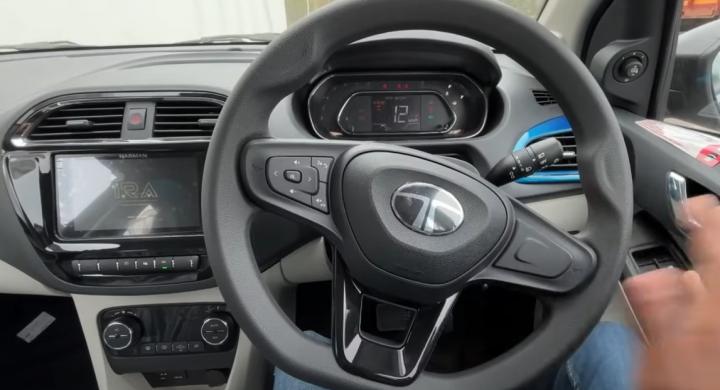




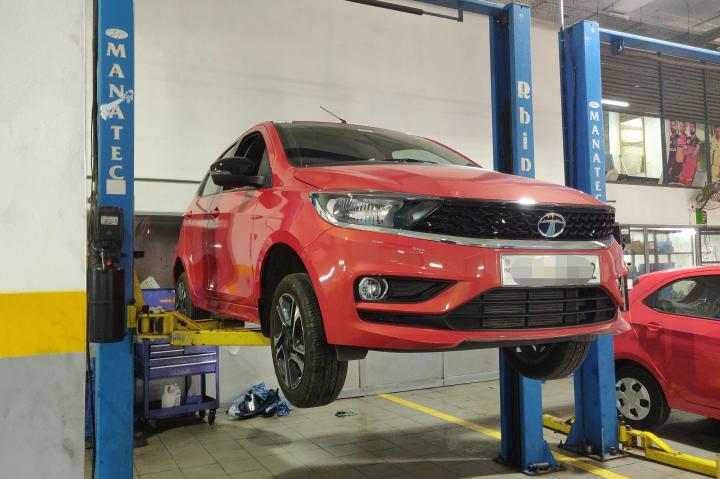
.jpg)
